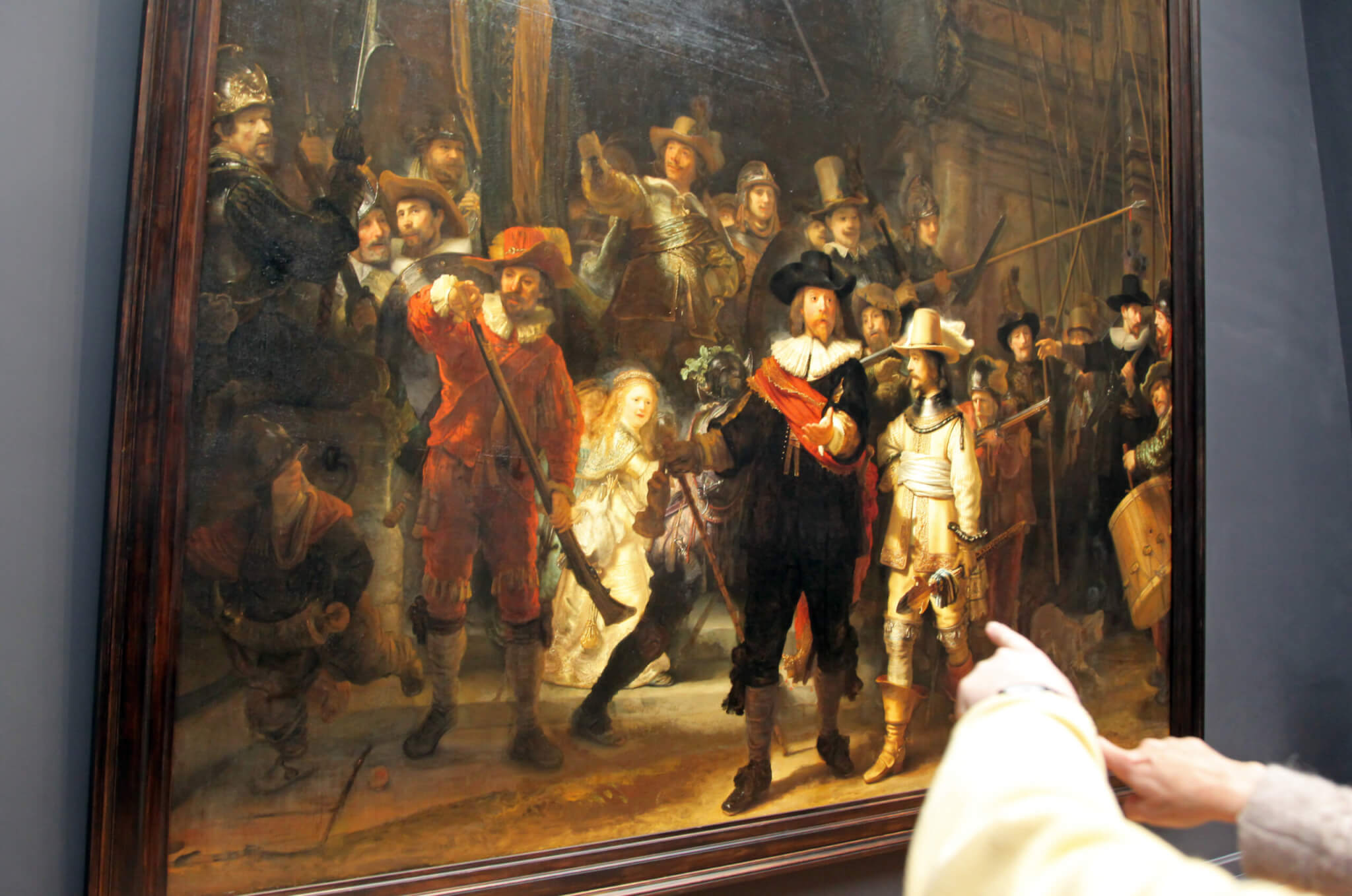AMSTERDAM — A fascinating new study is shedding light on Rembrandt’s iconic painting “The Night Watch,” revealing hidden layers and techniques previously unknown in the art world. This breakthrough, part of the ambitious “Operation Night Watch” project, combines cutting-edge technology with historical art analysis, offering an unprecedented glimpse into the artist’s methods and the painting’s evolving story over four centuries.
This surprising discovery, published in Science Advances, reveals Rembrandt’s adventurous spirit in the workshop. He wasn’t afraid to experiment, even with unconventional techniques, to make his artwork endure.
“The Night Watch,” officially titled “Militia Company of District II under the Command of Captain Frans Banninck Cocq,” stands as one of Rembrandt’s most significant works. Renowned for its intricate play of light and shadow and dynamic composition, the 1642 masterpiece diverges sharply from the static styles of its time.
But beyond its visible beauty, the painting harbored secrets beneath its surface, uncovered by the latest research.
Operation Night Watch: A Scientific Odyssey

Operation Night Watch is a pioneering initiative launched in 2019 by the Rijksmuseum in Amsterdam. The project represents the most extensive research and conservation effort ever undertaken on Rembrandt’s beloved artwork. With the support of a team of internationally renowned conservators, scientists, and researchers, the project aims to preserve “The Night Watch” for future generations while uncovering the secrets of its creation.
The study focused on the painting’s preparatory layers. Using advanced techniques like scanning electron microscopy and x-ray fluorescence nano-tomography, scientists could visualize the painting in three dimensions down to the nanoscale. This approach revealed the complex mix of organic and inorganic materials in Rembrandt’s palette, including the surprise use of a quartz-clay ground layer.
Discovery Of Lead Oil Impregnation In ‘The Night Watch’
One of the most groundbreaking discoveries was the presence of a lead-rich “layer” beneath the quartz-clay ground, suggesting that Rembrandt used lead oil to impregnate the canvas – a technique not typically found in 17th-century Dutch painting.
What does it mean to impregnate a painting? Before applying the actual paint layers, artists often prepare the canvas. Impregnation involves applying a substance to the canvas to condition it and create a suitable surface for painting. In the case of “The Night Watch,” the discovery suggests that Rembrandt used an oil mixed with lead compounds for this purpose.
Why lead? Well, back then, artists used animal glue to prepare canvas, but for a massive painting like “The Night Watch,” meant for a damp wall, that glue wouldn’t cut it. Rembrandt, ever the problem-solver, might have turned to a contemporary artist’s tip: impregnating the canvas with lead-rich oil for extra protection.
The research also provided valuable insights into how “The Night Watch” has degraded over time. For example, the unexpected presence of lead throughout the painting has been linked to lead soap protrusions, a common degradation phenomenon in old master oil paintings. This understanding is crucial for developing effective conservation strategies.
Future Of Art Conservation
While the study sheds light on “The Night Watch,” its implications extend far beyond this single work. The use of sophisticated imaging techniques sets a new standard in art conservation, offering a model for studying and preserving other masterpieces around the world.
As we marvel at the genius of Rembrandt, this research adds a new chapter to the story of “The Night Watch,” deepening our appreciation of this iconic work and the master behind it. In the intersection of science and art, we find a vivid testament to humanity’s enduring quest to understand and preserve its cultural heritage.
This journey into the heart of “The Night Watch” also exemplifies how modern technology can breathe new life into historical treasures, ensuring their stories continue to fascinate and inspire for generations to come.
